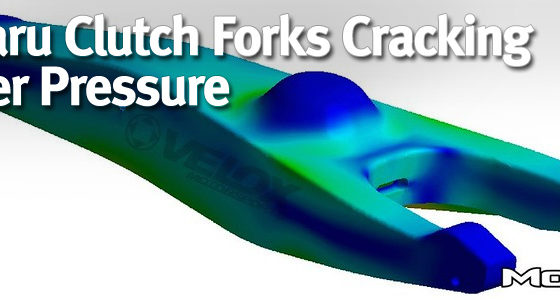
Project Lexus SC300 Road Racer: Part 9 – Begin Rewiring at the… Back?
After over a year of slow and methodical removal, preparation, and planning, it is finally time. We held our noses and closed our eyes and clicked the button to place an order with MilSpecWiring. Dozens of connectors, hundreds of feet of wire, heat shrink tubing, buttons, pins, tools, and other supplies were finally on their way. And on the day they arrived, the panic truly set in. We actually had to finally build everything.
Would the car ever run again? Only one way to make that happen – start at the back. Of the car, that is.
Warning — this article is very text heavy. But we describe some important motorsports wiring conventions, so be sure to read it all.
 The first wire.
The first wire.The time had come to for Tom to pull the first wire. But where do we go from here? And why did we make the plans that we did? We decided to start on the trunk harness because it was one of the simpler ones (or so we thought), and seemed like it would be a good warmup for the harder harness work. Let’s refer back to the plan, shall we?
The trunk harness is not terribly complicated, but some very important things happen there. The list of circuits in the trunk includes:
- High-pressure fuel pump
- Low-pressure lift pump
- Tail and brake lamps, blinkers, reverse lamps
- Fuel level sensor and conditioner
- Ground
Let’s take a moment to talk about ground, shall we?
If you ask some people, they might tell you that, in a car, ground means the battery negative terminal. They will say something like “if the wire doesn’t go all the way back to the battery negative, it’s not a good ground.”
This is nonsense. You should immediately stop listening to this person, with one exception — if your entire chassis is made of a nonconductive material (fiberglass, carbon fiber [ which technically can be conductive but anyway… ], plastic, wood, whatever). I digress.
SCIENCE BREAK
Almost all modern unibody vehicles are composed of aluminum and/or steel that is spot welded together in many places. Yes, aluminum and steel are not good conductors compared to copper wire. However, the ENTIRE CHASSIS of your vehicle is the conductor in this case, even if it is made of a poorly conducting material. That little wire running the length of your car back to the battery is not going to be much more conductive than the entire unibody once you get down to it. Using the chassis as ground is perfectly acceptable. But, that doesn’t mean that you can just go slap a ground connection anywhere you please.
Modern vehicles have tons of electronics in them. In fact, our Project SC300 uses a lot of them as you know from reading all of the wonderful articles that we wrote about it. All of these electronic devices are consuming varying amounts of power over time. These power fluctuations, the ignition system, the alternator and charging system, the radio transmissions, the CAN bus, and more all generate signals and electromagnetic fields that can be lump categorized as electrical noise. And, when you’re trying to precisely measure the location of spinny noisy engine bits and all manner of other things in a race car, noise is the enemy. So how does this relate to ground?
When you’re measuring something with a sensor, you are almost always ultimately measuring a voltage. Yes, certain sensors change resistance with the thing they’re measuring, but the change that your electrical device is observing is a change in voltage DUE to the change in resistance. There are exceptions to this, but for our purposes, let’s go with it.
If you remember basic early electrical stuff from high school, voltage is a form of potential energy. But that potential comes from somewhere — it’s referenced against something. That reference, in this automotive case, is ground. Technically chassis ground. And, technically it’s still the battery negative terminal, but you get the picture.
All of the noise in the automotive electrical environment can not only mess with your signals (which is why shielded wire is important in some cases), but can also disturb the actual ground level. Think of a perfectly calm lake surface that is then disturbed when your friend’s jet ski goes by. Ripples travel over the surface of the lake. What used to be a perfectly flat surface is now bumpy. That is what the electrical ground level in a car can look like over time when it’s very noisy.
Given that our sensors involve voltage measurements, and voltage itself is a measure referenced against ground, and noise actually changes the ground level, that means we can have a situation where the sensor value is fluctuating even if the actual thing being measured (eg: pressure) hasn’t changed! So what can we do to mitigate this noisy environment and try to improve the quality of our ground level?
If you look at the trunk harness design, you will see a ton of grounds, but they all terminate in one single location. We actually run a component’s ground wire back through the harness so that it exits at the same point with all the other grounds, and they all go into a single ring terminal and connect to the chassis at a single point.
By dropping all of the grounds at a single point, we help to reduce ground loops that can be introduced by having ground connections scattered everywhere around the area. Ground loops are when multiple electrical paths exist to reach the destination (ultimately the negative battery terminal), but the currents traveling along these different paths actually introduce more current flows because of electrical induction (magnetic field stuff).
So, before we fall off the electromagnetism deep end and start making weird left hand gestures at our desks to figure out which way currents are induced by fields (physics nerds will get that, everyone else can look it up), the too-long-didn’t-read summary for grounds is:
- Chassis ground is fine.
- Minimize the total number of ground connection points by “centralizing” them in each area of the car.
And, that’s why everything in the trunk is grounded to one point.
Next up, the fuel level conditioner.




